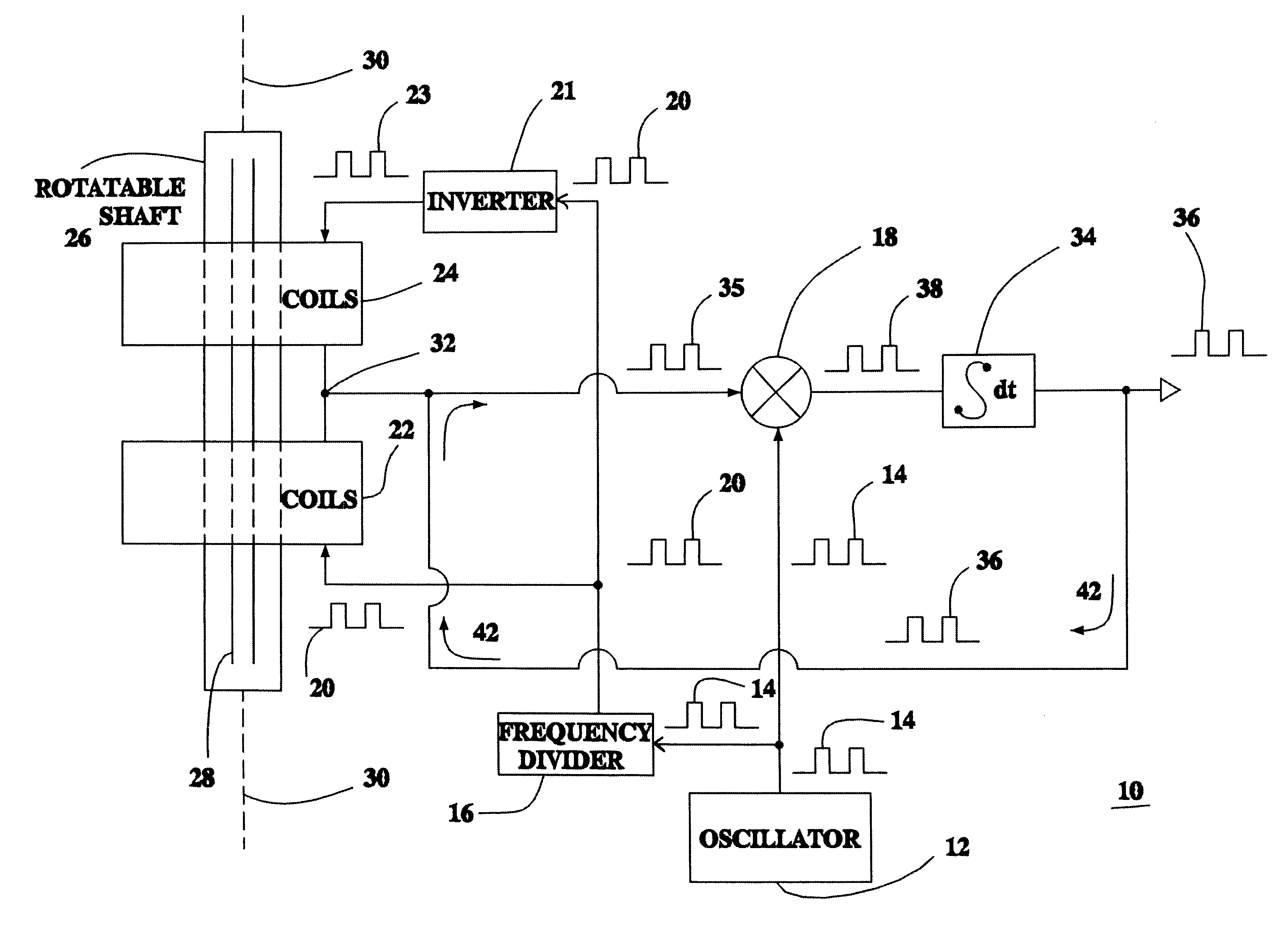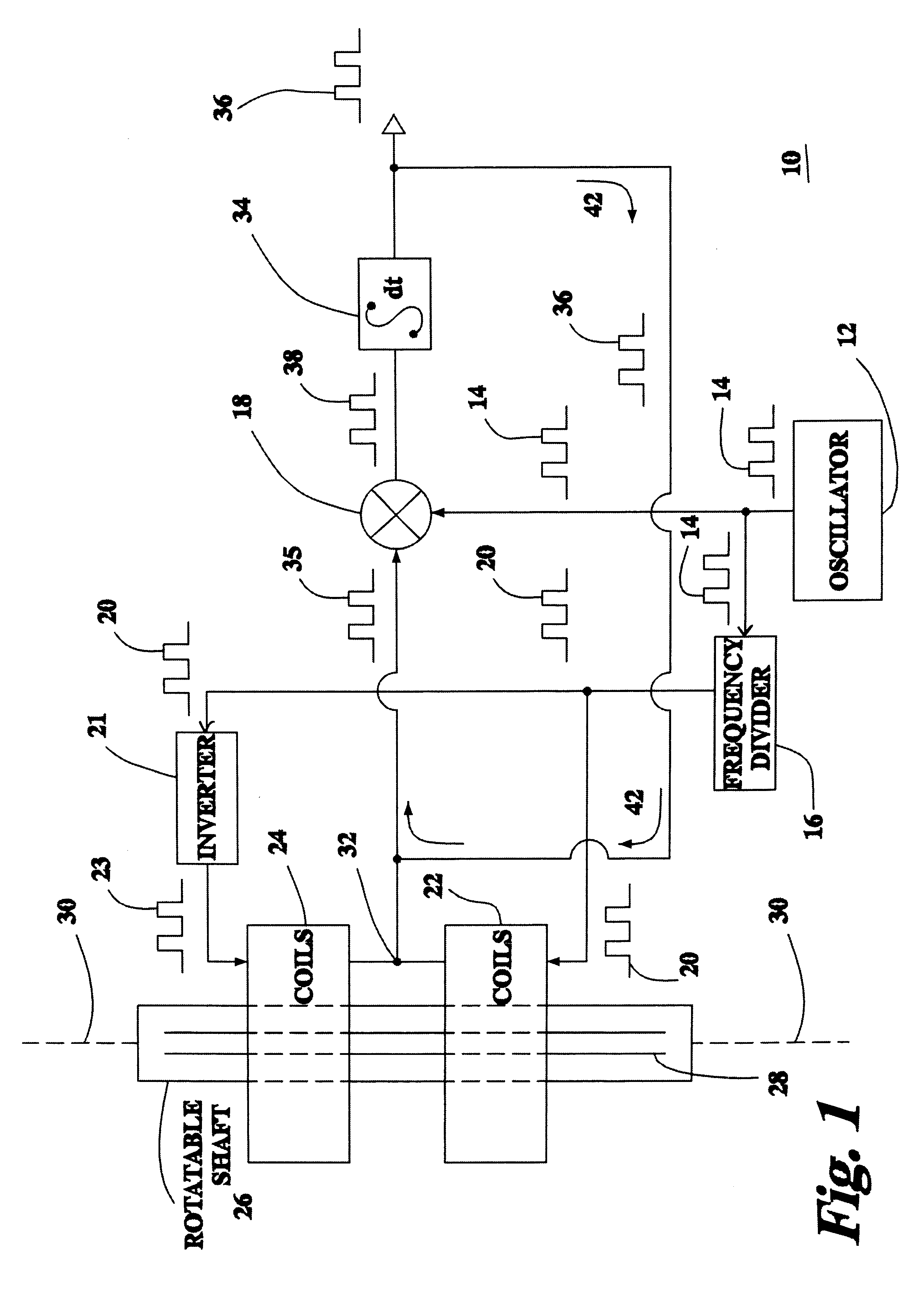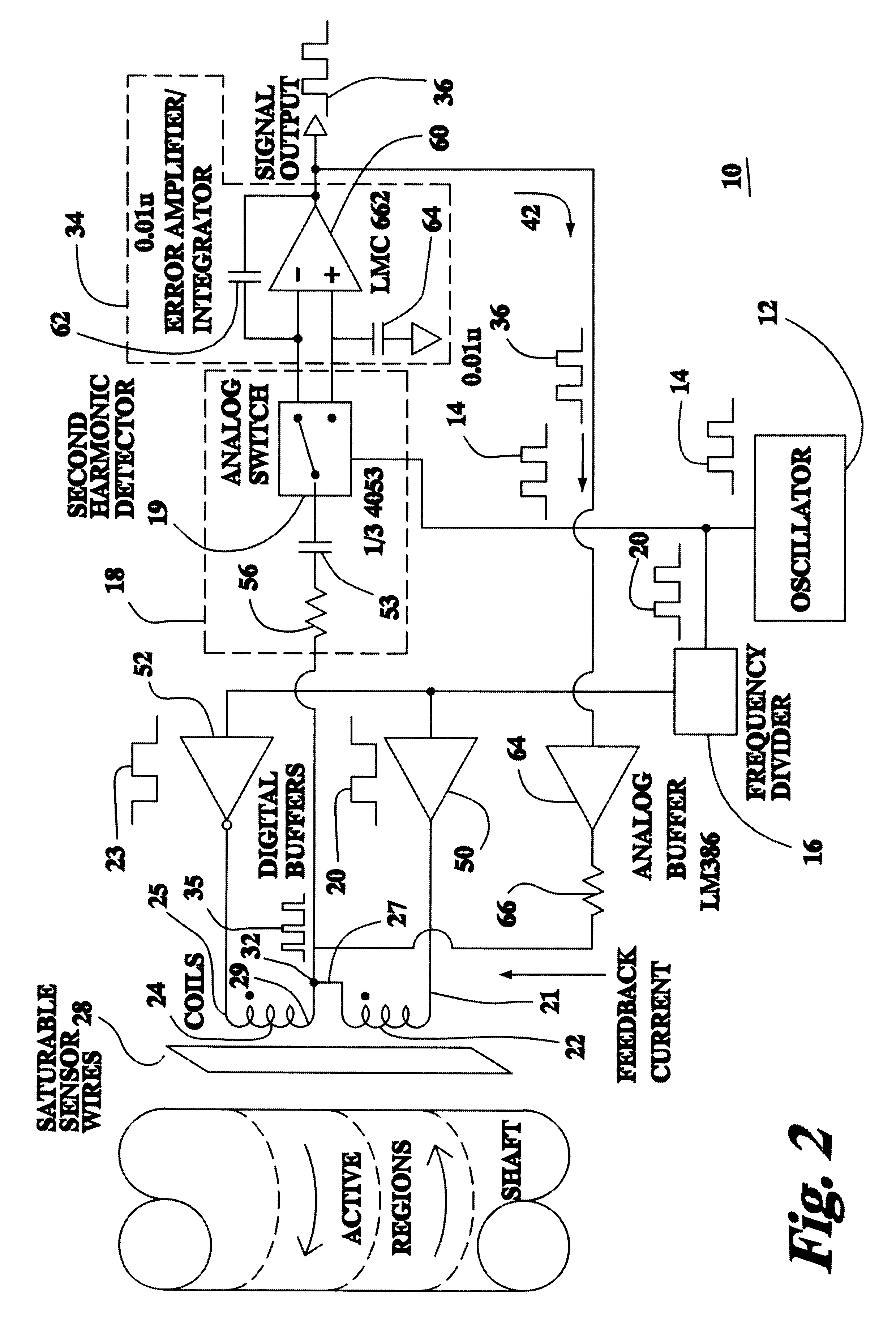Magnetoelastic torque sensor
a technology of magnetoelastic torque and sensor, which is applied in the direction of distance measurement, instruments, surveying and navigation, etc., can solve the problems of increasing the cost and complexity of such a system, the inability of commercially competitive use of vehicle steering systems, and the relatively unstable and limited reliability of contact-type sensors. achieve the effect of increasing accuracy
- Summary
- Abstract
- Description
- Claims
- Application Information
AI Technical Summary
Benefits of technology
Problems solved by technology
Method used
Image
Examples
first embodiment
Referring now to the drawings, FIG. 1 shows a block diagram of a flux-gate magnetometer torque sensor 10 configured in accordance with a preferred first embodiment of the present invention. An oscillator 12 generates a square wave signal 14 that is received by a frequency divider 16 and a first input of a multiplier 18. The frequency of the square wave signal 14 is divided in two by the frequency divider 16. The divided square wave signal 20 is inputted into inductor coil 22 and signal inverter 21, which outputs inverted signal 23 into inductor coil 24. The inductor coils 22 and 24 encircle a rotatable shaft 26 at two separate locations.
In accordance with the present invention, a plurality of strips or wires 28 of magnetically saturable material is mounted to the rotatable shaft 26. Each strip 28 is mounted parallel to an axis of rotation 30 of the rotatable shaft 26. The strips or sense wires 28 are driven into a saturated state twice every cycle of the divided signal 20.
The output...
second embodiment
FIG. 3A illustrates the bobbin 70 shown in FIG. 3. In this embodiment the sense wires or wire strips are bonded to an internal diameter surface 71 of the bobbin 70. This embodiment may be preferred in applications where the shaft will be spinning at very high RPM's where the resulting centripetal forces would preclude mounting the sensor to the shaft surface. In this embodiment, there is no suppression of any rotational signal inherent to the shaft; instead, low-pass filtering of the output signal can be used to attenuate any rotational signal. The conductive sleeve 84 is mounted to the internal surface diameter 71 of the bobbin 70, sandwiching the sense wires 28 between the conductive sleeve 84 and the inner surface 71 of the bobbin 70.
FIG. 4 depicts a block diagram of the magnetic field sensor in conjunction with the magnetoelastic shaft 26. The magnetoelastic shaft 26 is shown at left, with the sense wires 28 shown as a non-linear transformer core. A coil 90 is shown coupled to t...
PUM
| Property | Measurement | Unit |
|---|---|---|
| diameter | aaaaa | aaaaa |
| magnetic field | aaaaa | aaaaa |
| magnetic anisotropy | aaaaa | aaaaa |
Abstract
Description
Claims
Application Information
 Login to View More
Login to View More - R&D
- Intellectual Property
- Life Sciences
- Materials
- Tech Scout
- Unparalleled Data Quality
- Higher Quality Content
- 60% Fewer Hallucinations
Browse by: Latest US Patents, China's latest patents, Technical Efficacy Thesaurus, Application Domain, Technology Topic, Popular Technical Reports.
© 2025 PatSnap. All rights reserved.Legal|Privacy policy|Modern Slavery Act Transparency Statement|Sitemap|About US| Contact US: help@patsnap.com



